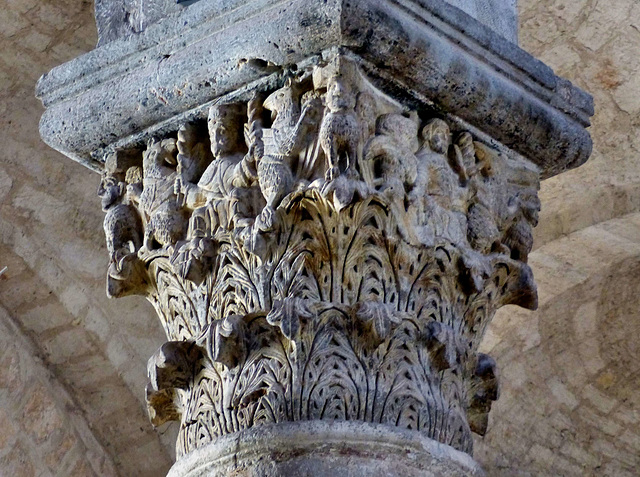Freiburg - Muenster
Chalon-sur-Saône - Cathedral
Remagen - Pfarrhoftor
Dijon - Cathédrale Saint-Bénigne
Remagen - Pfarrhoftor
Fidenza - Cattedrale di San Donnino
Basel - Muenster
Bitonto - Concattedrale di Bitonto
Trani - Cattedrale di San Nicola Pellegrino
Otranto - Cattedrale di Otranto
Otranto - Cattedrale di Otranto
Venezia - Basilica di San Marco
Location
Lat, Lng:
Lat, Lng:
You can copy the above to your favourite mapping app.
Address: unknown
Lat, Lng:
You can copy the above to your favourite mapping app.
Address: unknown
See also...
Keywords
Authorizations, license
-
Visible by: Everyone -
All rights reserved
-
164 visits
Bitonto - Concattedrale di Bitonto


Bitonto, today a city of a population of about 55000, was probably founded by Greek settlers. Traces of a city wall dating to the 5th and 4th century BC were found. Legends tell that the name Bitonto is connected to an Illyrian king named Botone. Later "Civitas Butuntinenses" became a self-governing Roman municipium,
A Paleochristian basilica existed very early. During the 9th century, Bitonto successfully withstood a Saracen raid but got destroyed by Byzantine troops in 975. The Normans took over Apulia. In the 11th and 12th century. Under the rule of the Normans of Roger II of Sicily, William I of Sicily (aka William the Wicked) and William II of Sicily (aka William the Good), the city prospered and got new walls.
In 1227, Bitonto was the scene of ex-communication of Frederick II accused by pope Gregory IX of having come to terms with the sultan al-Malik al-Kamil.
-
The Bitonto Cathedral, dedicated to San Valentino, was erected 1175/1200 in the centre of the city. The construction was probably influenced by the "Basilica of San Nicola" in Bari and was done in the typical "Apulian Romanesque" style.
It is proven that the bishopric existed in 1089, though the crypt of the cathedral has remains of a 5th-century church.
This capital, located on the right side of the nave, depicts Alexander the Great.
A legend in the Alexander romance had Alexander, wishing to see the whole world from above. To do this he harnessed two large birds (or Griffins) with a seat for him between them. To entice them to keep flying higher he placed meat (some say "roasted puppies") on two skewers which he held above their heads.
A Paleochristian basilica existed very early. During the 9th century, Bitonto successfully withstood a Saracen raid but got destroyed by Byzantine troops in 975. The Normans took over Apulia. In the 11th and 12th century. Under the rule of the Normans of Roger II of Sicily, William I of Sicily (aka William the Wicked) and William II of Sicily (aka William the Good), the city prospered and got new walls.
In 1227, Bitonto was the scene of ex-communication of Frederick II accused by pope Gregory IX of having come to terms with the sultan al-Malik al-Kamil.
-
The Bitonto Cathedral, dedicated to San Valentino, was erected 1175/1200 in the centre of the city. The construction was probably influenced by the "Basilica of San Nicola" in Bari and was done in the typical "Apulian Romanesque" style.
It is proven that the bishopric existed in 1089, though the crypt of the cathedral has remains of a 5th-century church.
This capital, located on the right side of the nave, depicts Alexander the Great.
A legend in the Alexander romance had Alexander, wishing to see the whole world from above. To do this he harnessed two large birds (or Griffins) with a seat for him between them. To entice them to keep flying higher he placed meat (some say "roasted puppies") on two skewers which he held above their heads.
- Keyboard shortcuts:
Jump to top
RSS feed- Latest comments - Subscribe to the comment feeds of this photo
- ipernity © 2007-2024
- Help & Contact
|
Club news
|
About ipernity
|
History |
ipernity Club & Prices |
Guide of good conduct
Donate | Group guidelines | Privacy policy | Terms of use | Statutes | In memoria -
Facebook
Twitter

Sign-in to write a comment.